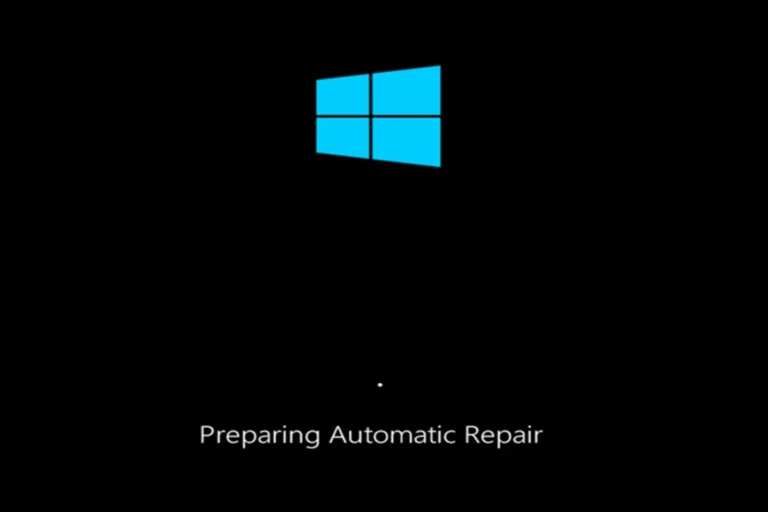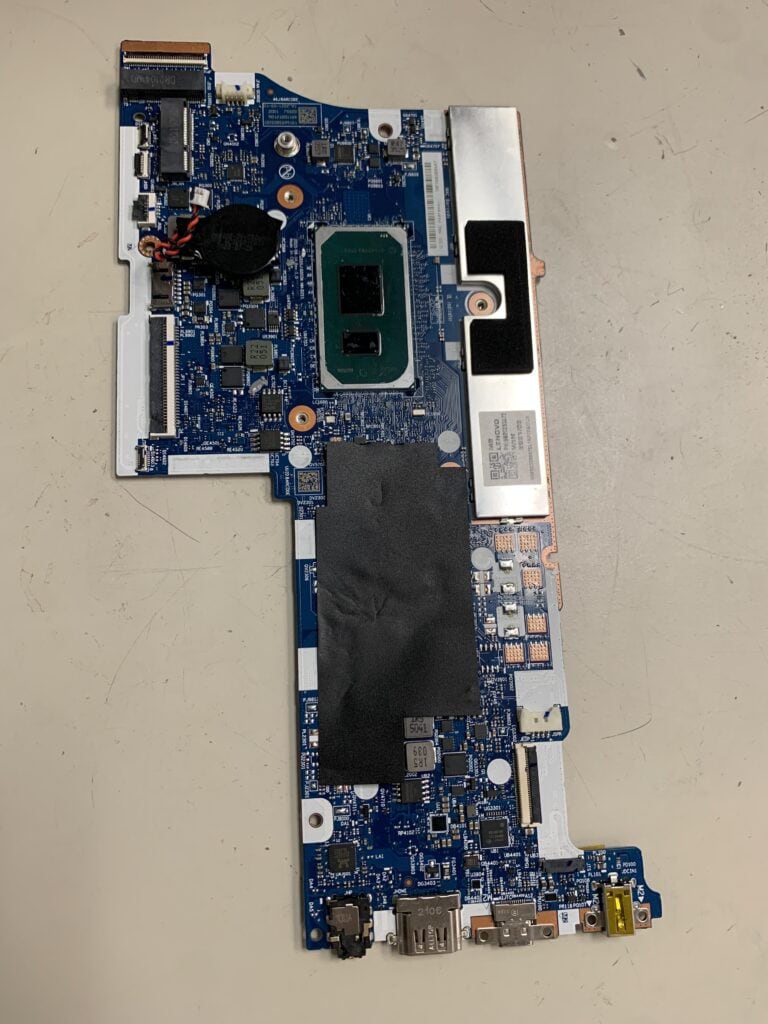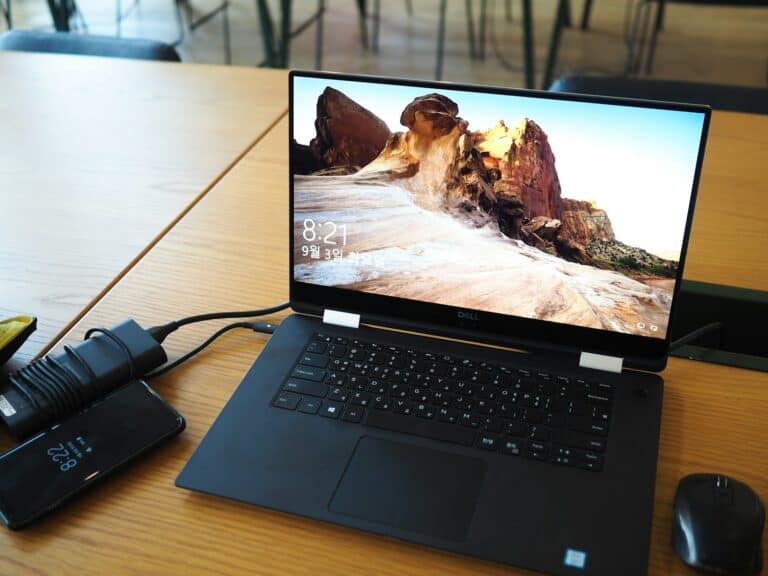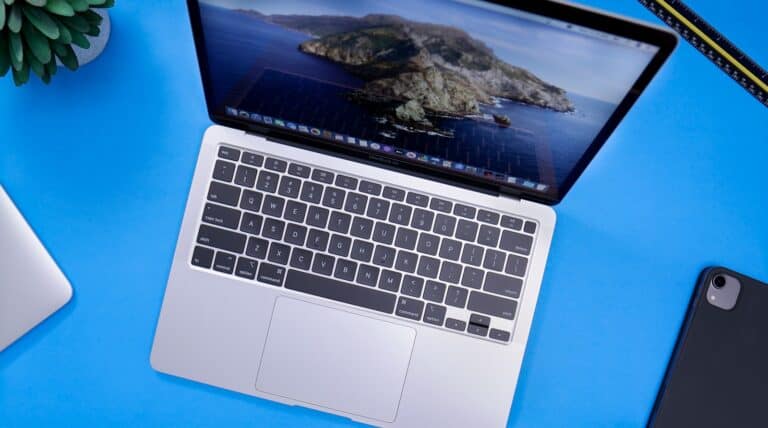Many families who receive food stamps wonder if they can get a free laptop through their EBT benefits. While EBT cards cannot directly purchase laptops, having an EBT card makes families eligible for several programs that provide free or heavily discounted computers.
The digital divide affects millions of low-income households who need computers for school, work, and essential services. Government programs and nonprofit organizations recognize this need and offer technology assistance to families already receiving public benefits. These programs use EBT enrollment as proof of financial need.
This guide covers the requirements families must meet, the best organizations currently offering laptop programs, and answers common questions about getting technology assistance. Readers will learn specific steps to apply and which programs offer the best chances of receiving a free or low-cost laptop.
Ways to Get a Free or Cheap Laptop
Access to a computer is more essential than ever for school, work, and daily life. Luckily, there are many government programs, nonprofits, and affordable alternatives available in 2025.
1. ✅ Government Programs
Several U.S. government-backed initiatives provide free or heavily discounted laptops to qualifying individuals:
- Affordable Connectivity Program (ACP)
- Designed to help low-income households get connected.
- Some ACP providers offer free or low-cost laptops when you qualify for internet assistance.
- Eligibility: Participation in SNAP/EBT, Medicaid, SSI, WIC, Pell Grants, or income below 200% of the federal poverty level.
- EBT & Medicaid Benefits
- State & Local Programs
- Many states run digital inclusion initiatives that provide devices to students, seniors, and job seekers.
2. 🎓 Student & Education Programs
- School District Programs
- Many K–12 schools and universities now loan or give laptops to students. Some allow graduates to keep them.
- Nonprofits for Students
- Organizations like Computers with Causes and EveryoneOn provide free laptops to students from low-income families.
3. 🤝 Nonprofits & Charities
- Computers with Causes – Donates free laptops to families, veterans, and students in need.
- The On It Foundation – Provides free computers to low-income families with children in school.
- PCs for People – Offers low-cost refurbished laptops to qualifying individuals.
- Human-I-T – Provides free or cheap laptops and internet access for underserved communities (source: Help St. Vincent).
4. 💻 Discount & Refurbished Options
If you don’t qualify for free programs, you can still get a laptop at a fraction of the cost:
- Refurbished Retailers: Amazon Renewed, Best Buy Outlet, Dell Refurbished, and Apple Certified Refurbished.
- Local Resources: Craigslist, Facebook Marketplace, and community recycling programs often have laptops for under $100.
- Tech Trade-In Programs: Some companies (Best Buy, Apple, Microsoft) offer trade-in credits toward a new device.
5. 🌍 Community Resources
- Libraries & Community Centers – Some libraries now lend laptops just like books.
- Job Training Programs – Workforce development programs often provide laptops to participants.
- Churches & Local Charities – Many faith-based organizations distribute donated laptops.
📑 How to Apply
- Check Eligibility – See if you qualify via income, EBT, Medicaid, SSI, or Pell Grants.
- Gather Documents – Proof of income, government assistance, or student enrollment.
- Apply Online – Through ACP providers, nonprofit websites, or local government portals.
- Follow Up – Some programs have long wait times, so persistence helps.
⚡ Quick Tips
- Always apply to multiple programs to increase your chances.
- Refurbished laptops are often just as good as new for basic needs.
- Beware of scams—stick to verified nonprofits and official government sites.
✨ Bottom Line:
In 2025, the best ways to get a free or cheap laptop are through government programs (ACP, EBT, Medicaid), nonprofits like Computers with Causes or PCs for People, and refurbished deals from trusted retailers. Students and low-income families have the most opportunities, but community programs can help anyone in need.
Key Takeaways
- EBT cardholders qualify for multiple programs offering free or discounted laptops through government and nonprofit organizations
- Applicants need active SNAP enrollment, income documentation, and must typically limit benefits to one device per household
- Programs like PCs for People, Human-I-T, and state initiatives provide the most reliable access to affordable technology for low-income families
Eligibility and Requirements for a Free Laptop With EBT
Getting a free laptop through EBT requires meeting specific income limits and participating in government assistance programs. Most programs require proof of enrollment in SNAP, Medicaid, or other federal assistance along with identity verification documents.
Who Qualifies for a Free Laptop With EBT
People enrolled in government assistance programs can apply for free laptops. SNAP recipients automatically qualify for most laptop programs since they already meet income requirements.
SSI beneficiaries also qualify for free laptop programs. Their enrollment in Supplemental Security Income shows they meet federal poverty guidelines.
Medicaid participants can access laptop programs through their healthcare assistance enrollment. Many organizations accept Medicaid as proof of financial need.
Families receiving Temporary Assistance for Needy Families (TANF) qualify for laptop programs. TANF enrollment proves they meet low-income requirements.
Students from families with free or reduced lunch programs can get laptops. Schools verify their eligibility through the National School Lunch Program.
Some programs target specific groups:
- K-12 students in public schools
- People with disabilities
- Job seekers needing computers for employment
- College students with Pell Grants
Income Guidelines and Federal Poverty Level Criteria
Most laptop programs require income at or below 200% of the federal poverty level. This equals about $31,200 yearly for a single person in 2025.
SNAP participants must earn 130% below the federal poverty line to qualify initially. This makes them automatically eligible for most free laptop programs.
Income verification requires recent pay stubs or tax returns. Applicants must show their current earnings fall within program limits.
Some organizations use different income thresholds:
- PCs for People: 200% of federal poverty level
- Human-I-T: Participation in any government assistance program
- On It Foundation: Free or reduced lunch eligibility
Household size affects income limits. A family of four can earn up to $62,400 yearly and still qualify for programs at 200% poverty level.
Required Documentation and Identity Verification
Photo identification is mandatory for all laptop programs. Accepted forms include driver’s licenses, state IDs, or passports.
Proof of address requires utility bills or lease agreements. Documents must show current mailing address where the laptop will be shipped.
EBT card or benefits letter proves enrollment in government assistance programs. Applicants need current documentation showing active participation.
Income verification includes pay stubs, tax returns, or benefit statements. Documents must be recent, typically within 30-90 days.
Additional documents may include:
- Social Security cards
- Birth certificates for children
- School enrollment verification
- Disability documentation if applicable
Application completeness is critical. Missing documents delay processing or cause rejections.
Government Assistance Programs That Enable Laptop Eligibility
SNAP (Supplemental Nutrition Assistance Program) is the most common qualifying program. EBT cardholders can apply to multiple laptop programs using their food stamp enrollment.
Medicaid recipients qualify for technology assistance programs. Healthcare coverage enrollment proves low-income status for laptop eligibility.
SSI (Supplemental Security Income) automatically qualifies participants. The federal program supports disabled and elderly people with limited income.
TANF families can access laptop programs through their cash assistance enrollment. Temporary Assistance for Needy Families shows financial need.
Section 8 housing assistance qualifies people for technology programs. Housing voucher recipients meet income requirements for free laptops.
Lifeline phone service participants often qualify for laptop programs. The discount phone program indicates government assistance participation.
Pell Grant recipients can apply for educational laptop programs. Federal student aid shows financial need for college students.
Veterans benefits may qualify recipients for specialized laptop programs. Some organizations specifically serve veteran families.
Best Programs and Organizations Providing Free or Discounted Laptops
Several nonprofit organizations and government-backed programs offer free laptops or low-cost computers to families with EBT benefits. These programs focus on bridging the digital divide through refurbished devices, digital literacy training, and affordable internet access.
Top Nonprofit and Community-Based Laptop Providers
PCs for People stands out as a leading provider of affordable technology. They offer refurbished laptops starting at $50 for families earning below 200% of the federal poverty line. EBT participants often qualify for completely free devices.
The organization partners with major brands like Dell, HP, and Lenovo. Their laptops come with Windows 10 or newer operating systems and meet basic computing needs.
Human-I-T provides free laptops to U.S. citizens who can show valid ID and income proof. Their devices include Intel Core i3 processors or better, at least 4GB RAM, and 250GB storage. Recipients also get free monthly service and an $85 hotspot.
The On It Foundation focuses specifically on K-12 students. They require students to attend public school and qualify for free or reduced lunch programs. Parents must submit a written application with school verification.
National Cristina Foundation operates through a network of over 1,300 nonprofit partners. They don’t provide laptops directly but connect people to local organizations that distribute refurbished technology.
Finding Refurbished and Low-Cost Computers
Computers with Causes runs a Free Computer Program that provides refurbished devices to individuals and organizations. Their program targets people who cannot afford new technology and focuses on educational opportunities.
Alliance for Technology connects users with nonprofit refurbishers across the country. They partner with organizations like Computer Reach, Electronic Access Foundation, and Virginia Star. These groups offer both free and discounted computers based on income requirements.
Most refurbished laptops from these programs cost between $50-$150. The devices typically include:
- Basic processors suitable for web browsing and document creation
- Operating systems like Windows 10 or Chrome OS
- Limited warranties and technical support
- Pre-installed software for productivity tasks
Community centers often partner with these organizations to distribute devices locally. Libraries also serve as pickup locations in many areas.
Digital Literacy and Technology Access Initiatives
EveryoneOn has helped over 1 million people access technology and internet services. They provide digital literacy training alongside device distribution. Their programs teach basic computer skills, internet safety, and job search techniques.
The organization offers discounted internet plans starting around $11.25 per month. They partner with internet service providers to extend affordable connectivity to low-income households.
Many laptop providers include free training sessions with device distribution. These classes cover:
- Basic computer operation and maintenance
- Internet navigation and email setup
- Online job applications and resume building
- Educational software and remote learning tools
Digital literacy training helps recipients maximize their technology investment. Programs typically last 4-8 weeks with both in-person and online options available.
Alternative Resources for Affordable Laptops and Internet
The Affordable Connectivity Program (ACP) provided internet subsidies and device discounts before ending recently. Similar state-level programs continue offering technology assistance in some areas.
Local community centers maintain computer labs with free internet access. Many offer device lending programs where families can borrow laptops for extended periods.
Libraries provide another alternative with free computer access and internet connectivity. Some library systems offer laptop checkout programs for cardholders.
Financial assistance programs beyond EBT can qualify families for technology support. These include:
- Medicaid enrollment
- Section 8 housing assistance
- SSI disability benefits
- Pell Grant recipients
Religious organizations and local charities sometimes run independent laptop distribution programs. These smaller initiatives often have less formal application processes but limited device availability.
Frequently Asked Questions
People often have questions about applying for free laptops through EBT and government programs. These answers cover application processes, eligibility rules, and specific program details.
How do I apply for a government program that provides free laptops?
Most government laptop programs require online applications through official websites or nonprofit partners. Applicants need to provide proof of enrollment in assistance programs like SNAP or EBT.
The application process typically involves uploading documents such as EBT cards, state eligibility letters, and valid photo identification. Some programs require additional income verification or household size information.
Processing times vary between programs but usually take 2-4 weeks for review. Approved applicants receive instructions for laptop pickup or delivery through email or mail notifications.
What are the eligibility requirements to receive a free laptop if I have an EBT card?
EBT cardholders must show current enrollment in SNAP, TANF, or other qualifying assistance programs. Most programs require the EBT card to be active within the past 90 days.
Additional requirements often include income limits based on federal poverty guidelines. Some programs prioritize families with school-age children or individuals seeking employment.
Applicants must provide proof of identity and residence within program service areas. Each organization sets specific criteria, so requirements vary between providers.
Are there any programs offering free laptops for low-income individuals?
Several nonprofit organizations provide free laptops to qualifying low-income individuals. PCs for People offers refurbished computers to families earning less than 200% of federal poverty guidelines.
Computers with Causes distributes laptops to individuals with documented financial need. The National Cristina Foundation connects applicants with local organizations that provide computer assistance.
Human I-T provides discounted laptops to families receiving government benefits. The On It Foundation focuses specifically on helping low-income students access technology for education.
Can I receive a free laptop through Medicaid benefits?
Medicaid does not directly provide laptops to beneficiaries. However, Medicaid recipients often qualify for laptop programs through other assistance programs they receive.
Many organizations accept Medicaid enrollment as proof of low-income status for laptop applications. Medicaid beneficiaries should apply through nonprofit organizations or community programs instead.
Some states offer technology assistance programs that consider Medicaid enrollment as part of eligibility criteria. These programs operate separately from Medicaid benefits.
Is it possible to get a free laptop from Amazon, and what are the steps involved?
Amazon does not operate a direct free laptop program for EBT recipients. However, Amazon offers discounted Prime memberships for EBT cardholders at reduced monthly rates.
Some community organizations partner with retailers like Amazon to purchase laptops for distribution programs. These partnerships allow bulk purchasing at reduced costs for nonprofit distribution.
EBT recipients should look for legitimate nonprofit programs rather than seeking free laptops directly from Amazon. Legitimate programs use established application processes and eligibility verification.
What is the Affordable Connectivity Program (ACP) and does it offer free laptops?
The Affordable Connectivity Program provided monthly internet discounts and device subsidies until funding ended in 2024. The program offered up to $100 toward laptop or tablet purchases for qualifying households.
ACP participants received $30 monthly internet discounts or $75 for households on tribal lands. Device subsidies required a co-payment of $10-50 from participants for laptops or tablets.
The program is currently suspended due to lack of federal funding. Advocates work to restore similar programs that would include device subsidies for low-income families.







